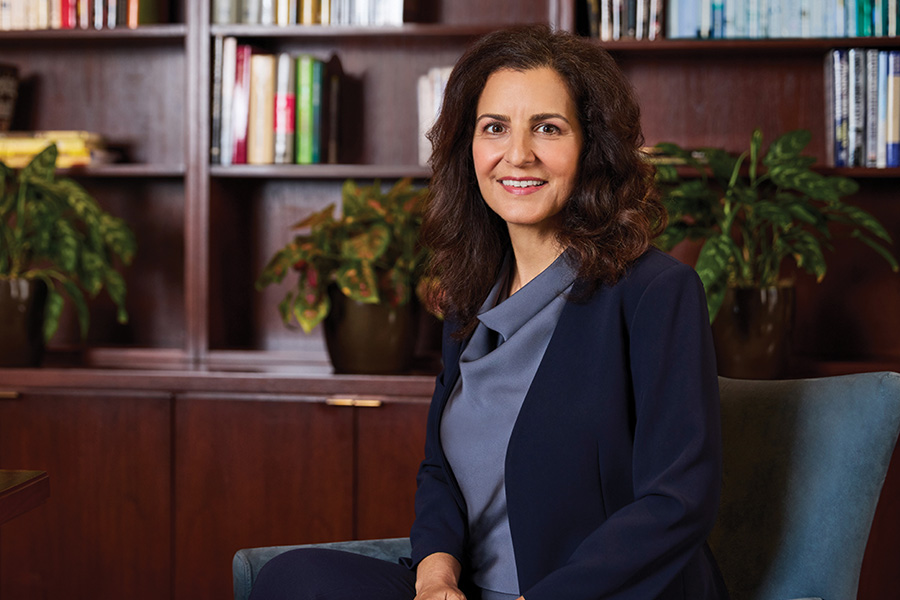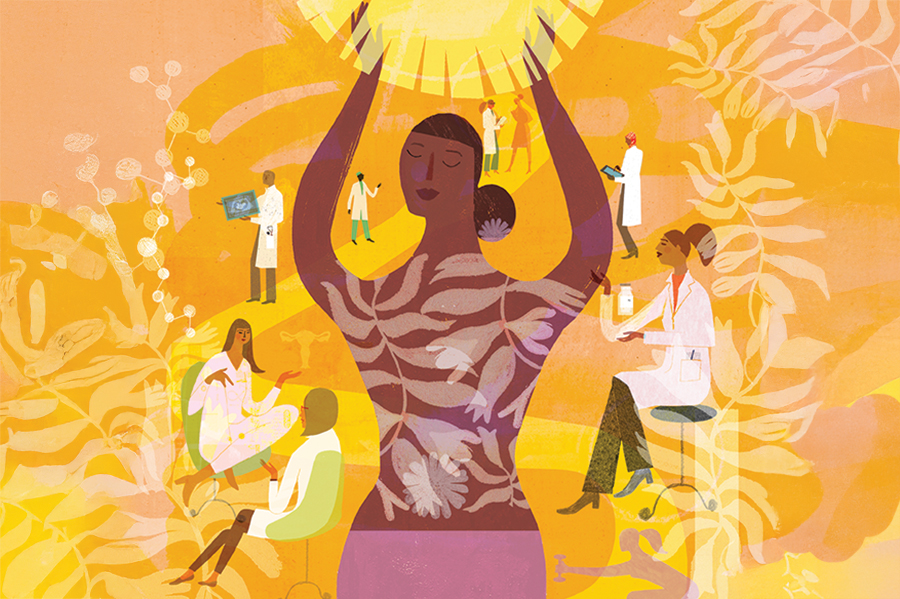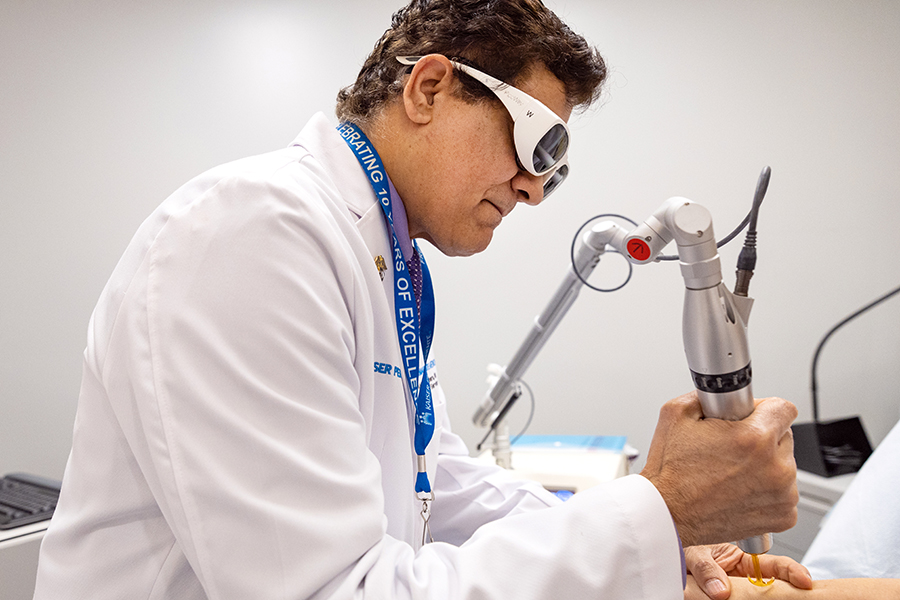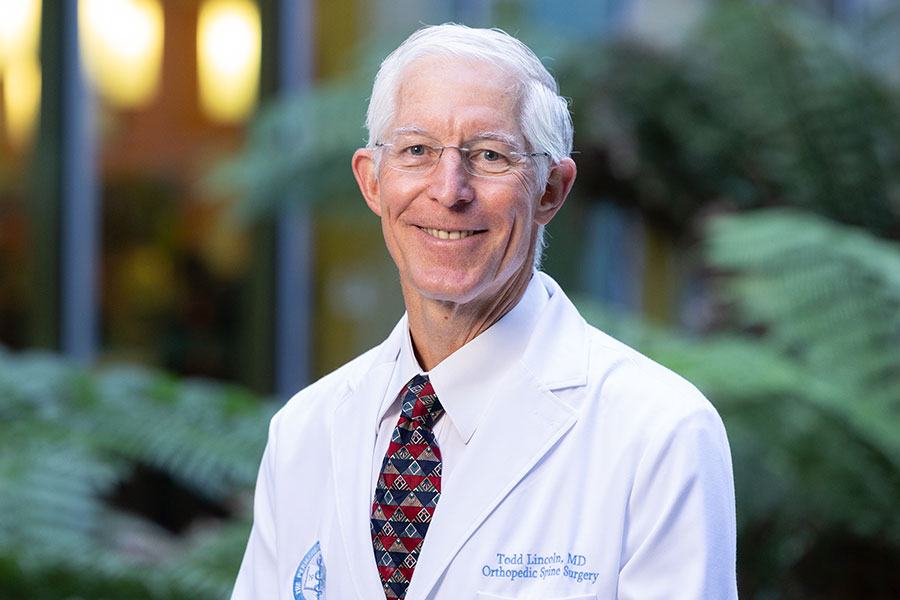As of June 1 this year, Maria Ansari, MD, FACC, has become the sixth executive director and CEO of The Permanente Medical Group. Dr. Ansari is also president and CEO of the Mid-Atlantic Permanente Medical Group and co-CEO of The Permanente Federation. She is the first woman to lead TPMG and MAPMG.
Dr. Ansari joined TPMG in 2004 as a member of the Cardiology Department at Kaiser Permanente San Francisco. Appointed to chief in 2007, she became chair of the TPMG cardiology chiefs’ group in 2012, and chair of the KP national interregional cardiology chiefs’ group the following year. Dr. Ansari served as physician-in-chief of KP San Francisco from 2014 until this year.
Permanente Excellence, the magazine for TPMG physicians, sat down with Dr. Ansari to learn more about her background, commitment to innovation, and vision for TPMG. This Q&A is an abridged version of the original publication.
Q: You’ve mentioned that while growing up in Michigan, you’d sometimes accompany your father on medical missions and that these experiences made you want to become a physician yourself. What was it about being with him on these trips that had such an impact?
A: These trips highlighted for me medicine’s core essential principles. On one trip, for example, at the impressionable age of 16, I found myself with my father in a camel-hair tent in the mountains of northwestern Iran. We’d taken a Jeep off-road to get there, and we were far away from any villages. Yet each morning when we’d wake up and look outside, 200 people were lined up to receive care. All of them lived in the hinterlands, and had heard the “doctor from America” was coming. I wondered, what is my dad going to do for all these people?
In pondering this question over the course of the mission, I had an epiphany: I wanted to become a doctor like him. What I witnessed was a universal language of healing, of my father putting his hand where something hurts, of validating and listening to people’s concerns. I was struck by the humanity of medicine, and thought, wow, a physician can go anywhere in the world and have something important to offer, something that connects us as human beings. People want to be heard, and there’s some healing that happens in that connection.
Q: Once you were older, did you ever assist your father on missions?
A: I did subsequently. My dad is a cardiovascular surgeon, and he performed the first successful coronary artery bypass surgery in Iran in 1990. He spent 2 years training about 30 surgeons there to perform the procedure, and developed a team locally to care for patients. I was a medical student during this time and went on a rotation to learn. The experience taught me about the value of team-based care. It’s not just about the surgery. It’s also about the anesthesiologist, the nursing care, the pharmacist, the blood bank — the entire team that makes surgery possible.
Q: You’ve held a number of leadership positions with TPMG and have been a longtime advocate of innovation and transformation. Is there anything you can point to in your life or career that has made you attuned to the power of change?
A: I think part of it is living in the Bay Area, where there is so much innovation, and just witnessing what a transformational effect the internet and technology have had in my own lifetime. But perhaps more significant is that when I joined TPMG, I observed a positive and vibrant appetite for transformation that was and still is much greater than at any health care organization where I had previously practiced.
Here in TPMG, I experienced this interest in: How can we do things better? How can we continually improve? TPMG physicians are receptive to practicing medicine differently because we don’t have the constraints that are forced upon those practicing in the fee-for-service world. A cancer patient can be seen by multiple specialists in one visit, and we don’t have to worry about the billing aspects or stepping on one another’s toes. I think the pace of change may not always be as fast as we want it to be, but the essential elements for transforming care delivery exist here. Our model offers us the flexibility and the opportunity to do things in our own way, and in creative ways that other health care systems simply aren’t able to do.
Q: For the last 8 years, physicians at KP San Francisco awarded you top marks for dealing effectively with challenges. Why do you think they see you as being so successful at this?
A: I think physicians at San Francisco feel I’ve been successful overall because I listen, I try to remove obstacles to the desired outcome, and I bring people together. And at the end of the day, even if we don’t get to the final destination, they know that I truly care and did everything humanly possible to reach our goal. Some things are impossible, of course. I may not be able to create more space, for example, but I will try really hard to get there, and people know that I’m going to do everything in my power to succeed. I’m kind of relentless in this way — if it’s important to them, it’s important to me. What motivates me in this regard is that I want us to be excellent, and I’m so proud of our doctors and our health care workers. I want them to know that someone has their back and that we’re in this together.
Q: At what point did you realize that leading TPMG was important to you?
A: I wanted to see change, and I felt that the pace of transformation was not consistent with where we need to be 5 or 10 years from now. The COVID-19 pandemic exposed areas of opportunity and laid bare concerns that many of us have in health care. Physicians across the country feel burned out, both from the moral injury of the pandemic and continued backlogs in care, as well as the increasing demands of desktop medicine and volume of secure messages. Slow speed to execution impedes care transformation. I felt we needed to refine our strategy to meet the changing needs of our membership, physicians, and staff, including more patient self-care tools and more flexible work opportunities for physicians and staff.
I wanted to play a critical role in addressing these issues in a very intentional way, with a high speed of execution. I believe we can and must reimagine a different kind of medical practice – one that balances the humanity of medicine with a performance-driven culture, and one that ensures we care for our people as well as our patients. We, and all health care systems today, need to fearlessly pursue change that leads to higher levels of excellence.
Q: You’re the first woman to lead TPMG. How would you describe the significance of this for the medical group?
A: I’m very proud, and I hope that it inspires even more women to step into leadership. Diversity at the highest levels of our executive teams and boards is a business imperative in all industries. Diversity of thought results in higher performing and more engaged teams at every level of the organization. And when you have an engaged workforce, you increase satisfaction, productivity, and performance. What I hope I’m bringing is a sense of optimism and a willingness to listen and create positive change.
Q: You’ve laid out a vision to advance the practice of medicine and improve the lives of patients by creating an environment that supports physicians and staff to do their best work. What does your strategy look like in the near term?
A: I have five immediate priorities. Address desktop medicine, because it’s the number one burnout factor for physicians. Enhance recruitment to help ensure we are fully staffed to do our best work. Increase physician and staff retention because strong, collaborative team-based care is critical to sustaining our practice and delivering the best care. Develop an urgent care strategy to respond to increasing patient demand for 24/7 convenience care. And build an innovation hub that engages and harnesses the power of our people.
The latter is one I’m especially excited about. I believe there’s still so much untapped potential among our physicians and the teams they lead. In many organizations, ideas come from the top, but I want to further develop mechanisms we already have in place for ideas to percolate from the ground up, and increase cross-functional teams so that we can spread ideas from the medical centers more rapidly. If we want to compete with other industries like venture capital firms and retail giants that are entering the realm of tech-enabled health care services, the good ideas of our physicians and teams must be readily heard.
Q: What challenges do you foresee in achieving your goals for the medical group?
A: Internally, I think the biggest challenge is ourselves. Even in our organization, we still have some siloed thinking that we need to overcome. We need to be fearless – and willing to take purposeful steps toward change. While these may lead to some early failures, we can learn from them.
Some of the most significant external challenges include the economy, inflation, and the net attrition of the California population. Another is the workforce shortage. We need to make TPMG the destination to practice medicine and the preferred place to deliver care, whether you’re a physician, nurse, physician assistant, medical assistant, or any other member of the care team.
Q: What inherent parts of TPMG’s culture and structure do you think work in our favor for overcoming these challenges and achieving your vision?
A: I deeply believe in the strength of our people, and those are not just words. Our physicians are driven by mission and purpose, and doing what’s right for patients. They are exceptional clinicians, and they believe in our model of care. And as the largest physician-led medical group in this country, we have to be the ones to overcome these challenges. What will allow us to do this, in addition to our people, is our integrated model, in which incentives are aligned with the best outcome for the patient.
At our core, our greatest advantage is that we are an optimal solution for American health care because we are a diverse organization that cares for a deeply diverse population. It’s not just healthy individuals, or the worried well, or the tech-enabled, or those who live in affluent communities with neighborhood clinics. We take care of the entire spectrum of society. And we deliver far more than physician access via a digital front door. Behind it is first-class specialty care, complex care, hospital care, and primary care. No one else offers what we do, and we have the potential to offer so much more.
Q: Where do you envision the medical group five years from now?
A: I believe we’ll lead the country in tech-enabled care in the hospital and at home, with greater industry partnerships that facilitate rapid deployment of technology and enhanced public partnerships that improve the lives of our communities. I look forward to our offering more digital support tools for disease self-management. The future of health care is in the home, especially with the aging population, and TPMG will be there. I also foresee many opportunities to use artificial intelligence to enhance patient care.
Q: What do you hope to be remembered for at the end of your tenure as CEO?
A: I hope to be remembered as an instrument for change. I always say that it’s not about me. It’s about the organization and where we need to go. I’m here to be a fearless leader who has a willingness to drive for results. I want to get us to our destination and facilitate our success along the way.
I believe it’s important for TPMG physicians to remember that this is their medical group, that each of us is an architect of our future, and that there is a direct connection between their contributions and our collective success. Every individual has unique value and perspective to bring to the table. I have no doubt that with all of our contributions and commitment, we will be unstoppable.
This article originally appeared in Permanente Excellence Vol. 8 No. 2 magazine.






